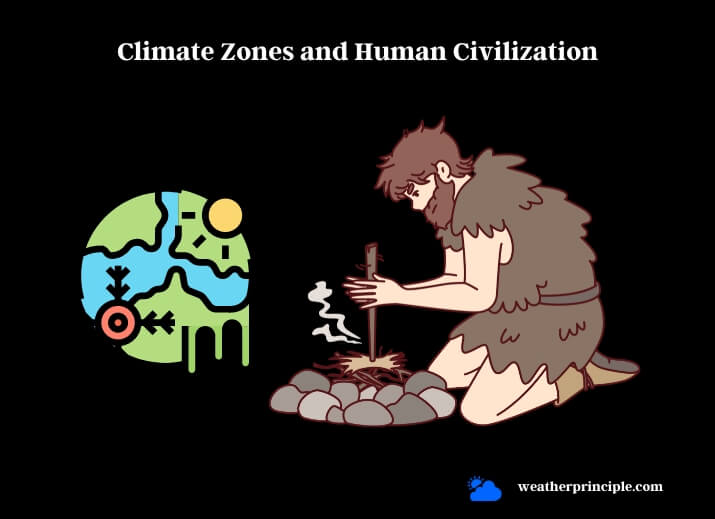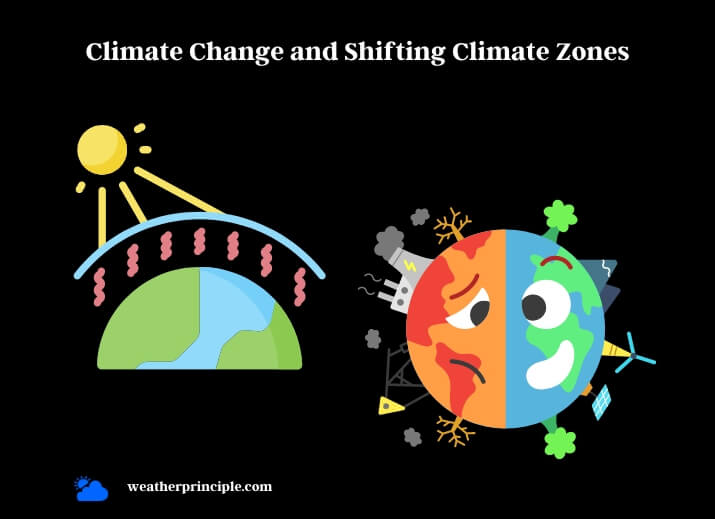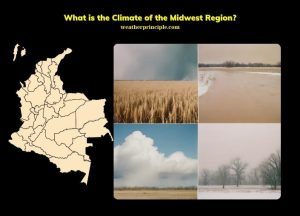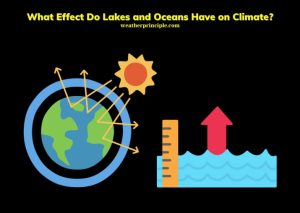Published on: May 11, 2023
Written by Kader Khan / Fact-checked by Shaown Khan
Climate zones are essential to understanding the Earth’s diverse environments and ecosystems. By studying these zones, we can gain insights into the relationship between climate, biodiversity, and human societies. As we face the challenges of climate change, understanding these relationships becomes crucial in protecting our planet and adapting to its evolving conditions.
Climate classification involves organizing Earth’s climates into distinct categories based on temperature, precipitation, and other climatic factors. Various classification systems have been developed to help us better comprehend the complexities of our planet’s climates.
Climate Classification Systems
Köppen-Geiger Classification System
The Foundation of Modern Climate Classification
Developed by German climatologist Wladimir Köppen in 1884 and later refined by Rudolf Geiger, the Köppen-Geiger classification system is the most widely used climate classification system today. It focuses on temperature, precipitation, and vegetation patterns to define different climate types.
Major Climate Groups, Types, and Subtypes
The Köppen-Geiger system divides Earth’s climates into five primary groups, each with unique types and subtypes. These groups are Tropical (A), Dry (B), Temperate (C), Continental (D), and Polar and Alpine (E).
Thornthwaite Climate Classification System
The Role of Evapotranspiration
American geographer and climatologist C. Warren Thornthwaite developed his climate classification system in 1948. It emphasizes the role of evapotranspiration (the combination of evaporation and plant transpiration) in determining climate types, making it particularly useful in hydrology and agriculture.
Application in Hydrology and Agriculture
The Thornthwaite system aids in predicting water availability, crop yields, and assessing the impacts of water management practices, making it valuable for agricultural planning and water resource management.
Trewartha Climate Classification System
Simplifying the Köppen-Geiger System
Glenn Trewartha, an American geographer, introduced his classification system in 1966 as a simplified version of the Köppen-Geiger system. It focuses on the general characteristics of climate zones and reduces the number of types and subtypes.
Focus on the Vegetative Landscape
The Trewartha system emphasizes the vegetative landscape and its relationship to climate, making it more applicable for studying the impacts of climate on ecosystems.
Major Climate Groups
Tropical Climates (Group A)
Characteristics and Distribution
Tropical climates are characterized by consistently warm temperatures and significant rainfall. They are found near the Earth’s equator, covering areas in South and Central America, Africa, Southeast Asia, and Oceania.
Subtypes: Af, Am, and Aw
Tropical climates can be further subdivided into three subtypes: Tropical Rainforest (Af), Tropical Monsoon (Am), and Tropical Savanna (Aw).
Dry Climates (Group B)
Characteristics and Distribution
Dry climates receive little precipitation and have high evaporation rates. They are found in regions such as the Sahara Desert, Arabian Peninsula, and the Australian Outback.
Subtypes: BW and BS
Dry climates can be divided into two subtypes: Arid (BW) and Semi-Arid (BS).
Temperate Climates (Group C)
Characteristics and Distribution
Temperate climates have moderate temperatures and varying precipitation patterns. They are found in regions such as the United States, Europe, and East Asia.
Subtypes: Cfa, Cfb, Cfc, Csa, Csb, and Csc
Temperate climates include six subtypes: Humid Subtropical (Cfa), Oceanic (Cfb), Subpolar Oceanic (Cfc), Mediterranean (Csa), Warm Summer Mediterranean (Csb), and Cool Summer Mediterranean (Csc).
Continental Climates (Group D)
Characteristics and Distribution
Continental climates experience more significant temperature variations between seasons, with cold winters and warm summers. These climates are typically found in the interior regions of large landmasses, such as North America, Europe, and Asia.
Subtypes: Dfa, Dfb, Dfc, Dfd, Dwa, Dwb, Dwc, and Dwd
Continental climates are divided into eight subtypes, based on temperature and precipitation patterns: Hot Summer (Dfa), Warm Summer (Dfb), Subarctic (Dfc), Extremely Cold Subarctic (Dfd), Monsoon-influenced Hot Summer (Dwa), Monsoon-influenced Warm Summer (Dwb), Monsoon-influenced Subarctic (Dwc), and Monsoon-influenced Extremely Cold Subarctic (Dwd).
Polar and Alpine Climates (Group E)
Characteristics and Distribution
Polar and Alpine climates are characterized by cold temperatures year-round and are found near the Earth’s poles or at high elevations. Examples include Antarctica, the Arctic, and the Himalayas.
Subtypes: EF, ET, and EU
Polar and Alpine climates can be further divided into three subtypes: Ice Cap (EF), Tundra (ET), and Uninhabited Alpine (EU).
Climate Zones and Biodiversity
The Role of Climate in Shaping Ecosystems
Climate plays a significant role in shaping ecosystems, as it directly affects plant and animal life. Different climate zones support distinct plant and animal communities, leading to the Earth’s diverse biomes, such as tropical rainforests, savannas, deserts, and tundras.

The Correlation Between Climate Zones and Biomes
The climate-biome relationship is essential in understanding the distribution of plant and animal species across the planet. This knowledge is critical for biodiversity conservation efforts and managing ecosystems in a changing climate.
Climate Zones and Human Civilization
How Climate Zones Have Influenced Agricultural Practices
Climate zones directly impact agricultural practices, as different crops require specific temperature and precipitation conditions to thrive. The distribution of agricultural systems worldwide closely aligns with climate zones, shaping the types of crops grown and the techniques used in each region.
The Impact of Climate Zones on Urban Planning and Architecture
Climate zones also influence urban planning and architecture, as different building materials and design strategies are employed to adapt to various climatic conditions. For example, vernacular architecture in tropical climates often includes open spaces and natural ventilation, while buildings in cold climates may incorporate insulation and passive solar design.

Climate Zones and Their Effect on Culture and Lifestyle
The climates in which people live can significantly influence their culture, traditions, and lifestyles. This is evident in aspects such as clothing, cuisine, and social customs, which often reflect the local climate conditions.
Climate Change and Shifting Climate Zones
The Influence of Climate Change on Climate Zones
As the Earth’s climate changes, climate zones are also shifting, with some areas experiencing altered temperature and precipitation patterns. These changes can have significant consequences for ecosystems and human societies that rely on stable climate conditions.

Consequences for Ecosystems and Human Societies
Shifting climate zones can lead to changes in species distribution and the overall health of ecosystems, potentially leading to biodiversity loss. Furthermore, human societies that depend on specific climate conditions for agriculture or other activities may face challenges in adapting to these changes.
Summary
Climate zones is essential for comprehending the Earth’s diverse ecosystems, the distribution of plant and animal
species, and the impact of climate on human societies. By studying various climate classification systems, such as the Köppen-Geiger, Thornthwaite, and Trewartha systems, we can gain a deeper understanding of the world’s climate patterns and their implications. As the Earth’s climate continues to change, our knowledge of climate zones will be crucial in helping us protect ecosystems, conserve biodiversity, and adapt to shifting conditions.
Frequently Asked Questions (FAQs)
What is the difference between weather and climate?
Weather refers to the short-term atmospheric conditions, such as temperature, humidity, precipitation, and wind, experienced in a specific location. Climate, on the other hand, describes the long-term patterns of weather in a particular region, typically averaged over a period of 30 years or more.
What Are the Main Climate Differences Between Texas and Florida?
The Texas and Florida weather showcase distinct climate differences. Texas experiences hot summers and mild winters, bearing the brunt of extreme weather events like hurricanes. Meanwhile, Florida boasts a tropical climate with humid summers and warm winters. These variations in temperature and precipitation contribute to the unique climates of both states.
How do climate zones affect the distribution of plant and animal species?
Climate zones play a significant role in the distribution of plant and animal species, as different species have unique temperature and precipitation requirements for survival and reproduction. These requirements define their ecological niches, leading to the establishment of distinct biomes associated with specific climate zones.
Why are climate classification systems important for the study of Earth’s environment?
Climate classification systems help us better understand the Earth’s environment by organizing complex climate data into distinct categories. By studying these categories, we can gain insights into the relationships between climate, ecosystems, and human societies, and predict potential changes in response to global climate change.
How can understanding climate zones help us address the challenges of climate change?
Understanding climate zones is crucial in addressing the challenges of climate change, as it allows us to predict potential shifts in temperature and precipitation patterns. This knowledge can help inform strategies for conserving biodiversity, managing ecosystems, and adapting human activities to changing climatic conditions.
Can climate zones change over time? If so, what are the potential implications for ecosystems and human societies?
Yes, climate zones can change over time due to natural factors, such as variations in Earth’s orbit, and human-induced factors, such as greenhouse gas emissions. Shifting climate zones can have significant implications for ecosystems, as changes in temperature and precipitation patterns can lead to altered species distribution and potential biodiversity loss. Furthermore, human societies that rely on specific climate conditions for agriculture, water resources, and other activities may face challenges in adapting to these changes.



